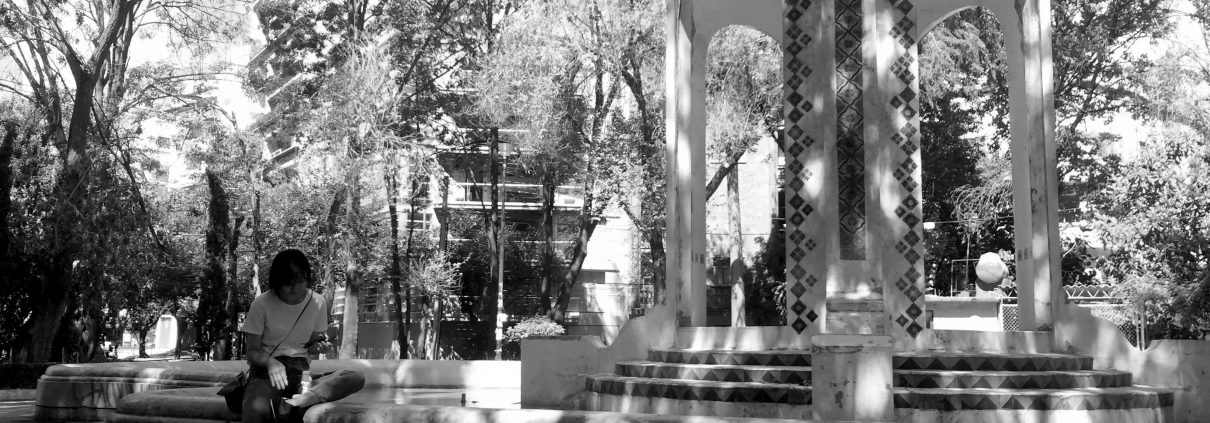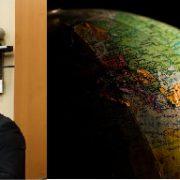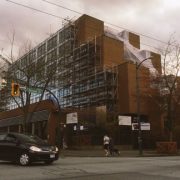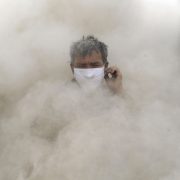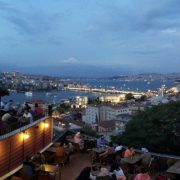Reflexive Use of Urban Space: from Los Angeles to Mexico City
By Alejandro Mercado, PhD Urban Planning ’04
I moved to Los Angeles more than twenty years ago and lived there for five years during my PhD studies at UCLA. The impact that my stay in Los Angeles had on my personal life and professional career is still present to this day. Certainly, Los Angeles and UCLA gave me a global view and sensitivity, and when I returned to Mexico City, I took with me a global network of friends and colleagues.
Celebrated LA multiculturalism has been profusely written about. Multiculturalism, as we know, expresses itself in many ways across urban space. Some communities with different cultural or ethnic backgrounds and lifestyles traits dominate certain areas and even strive to create a distinctive district atmosphere. Beyond the multiplicity of concentrations, districts and cities within the metro area, what attracted me was the possibility to visit them, navigate through them, create connections within them, and in a way use them for many things, ranging from work to pure hedonistic pleasure. Did it matter where I lived in the city in terms of accessing all these spaces, communities and located resources? Only to a limited extent; I did move around this enormous city and I discovered many of its secrets, sometimes by accident and through friends and acquaintances. This knowledge undoubtedly was passed on to my closest friends in LA and to those who visited me from Mexico during those years.
What interested me about this access to the city’s tangible and intangible resources was the possibility of a reflexive use of the urban space on a daily basis, and for multiple purposes which even included looking for chance face-to-face encounters with specific communities or people. My later work in Mexico City has attempted to reveal this reflexive and mobile “location” through the identification of spatialized webs of movement. In particular, I’ve been interested in the link that is sometimes made between specific urban districts and cultural scenes and creative industries.
In my opinion, the identification of aestheticized urban districts, for example in the case of Mexico City with music scenes, is a simplification of economic and cultural processes that take place in the metropolitan region and not at the urban district scale. If we include the possibility of “reflexive changing locations” of people and organizations, we can see creative urban districts as components of larger systems that include diverse consumers from different social classes with diverse tastes, many of whom come from and live in places that are not as glamorous or trendy as hip neighborhoods. These other urban areas, and the producers and consumers of cultural products in those areas, tend to be forgotten or dismissed as unimportant, whereas they are central to the functioning of the system. I tried to test this hypothesis for Mexico City’s Digital Generation Music scene, which is supposedly located in the circuit formed by two districts: Roma-Condesa, and Centro Historico (downtown). Visualizing the network of venues that belong to this scene, we found that the Digital Generation Music scene has a metropolitan extension and that peripheral districts are of major importance to that scene.
After this study, we are currently working on the reflexive use of urban space by different communities of practice. Individuals in different communities of practice know which places and which days are relevant to casually meet people in the “industry”. The sole fact of knowing these places seems to be a form of recognition of being part of that community, in other words, a form of subcultural capital. Interestingly enough, these places are scattered throughout the city, and some of the most important venues are not located in or in close proximity to the districts where these persons work. However, the reflexive use of the urban space and the relative importance of agglomeration in districts and dispersed networks within a metropolitan economy may be linked only to extremely large cities, like Mexico City and Los Angeles.
 Alejandro Mercado is a professor of urban planning at la Universidad Autónoma Metropolitana in Mexico City. His research interests include urban and economic geography, urban and regional development, industrial districts, creative industries, small firms, and tourism. He received his PhD in urban planning from UCLA in 2004 under the supervision of professor Michael Storper.
Alejandro Mercado is a professor of urban planning at la Universidad Autónoma Metropolitana in Mexico City. His research interests include urban and economic geography, urban and regional development, industrial districts, creative industries, small firms, and tourism. He received his PhD in urban planning from UCLA in 2004 under the supervision of professor Michael Storper.

